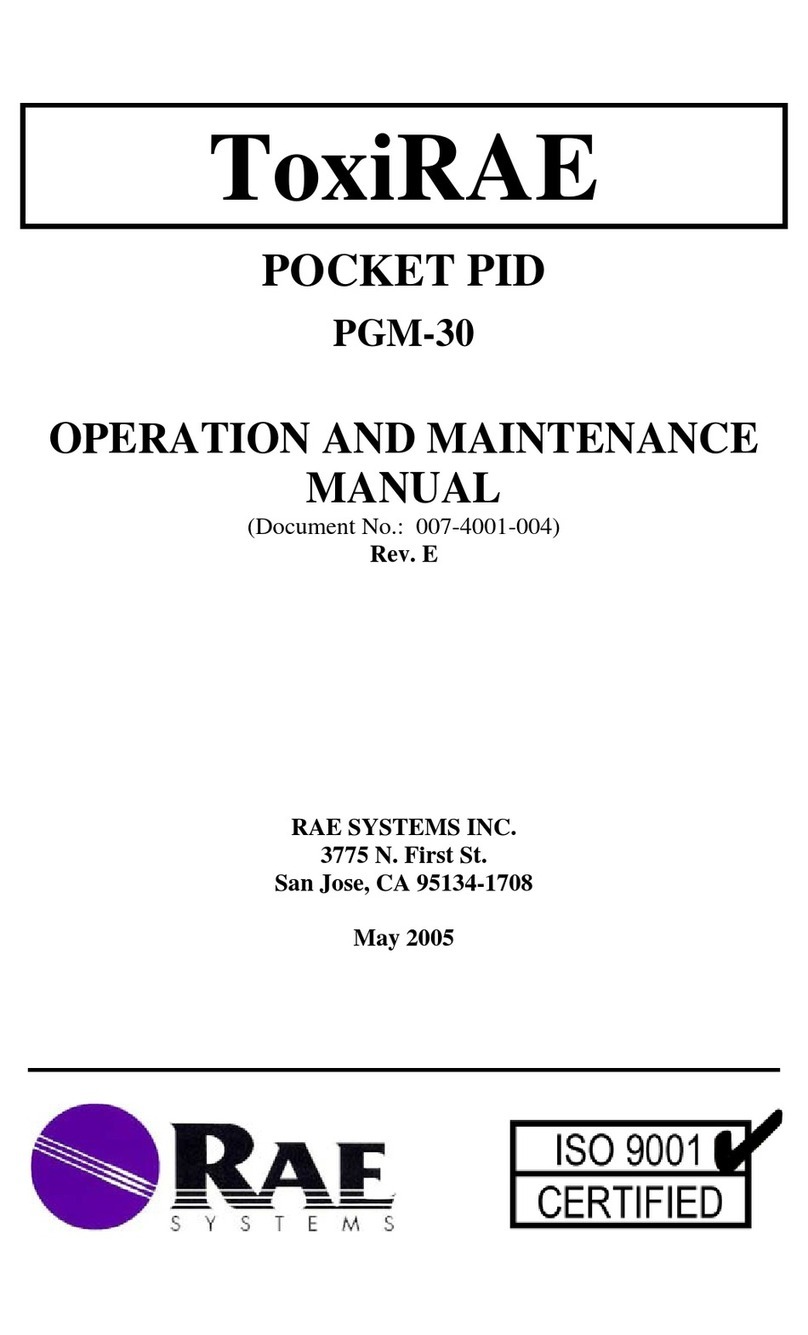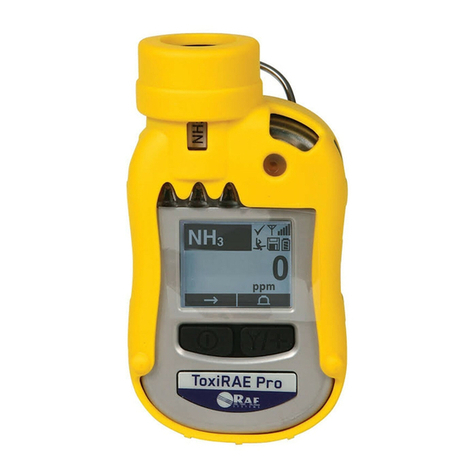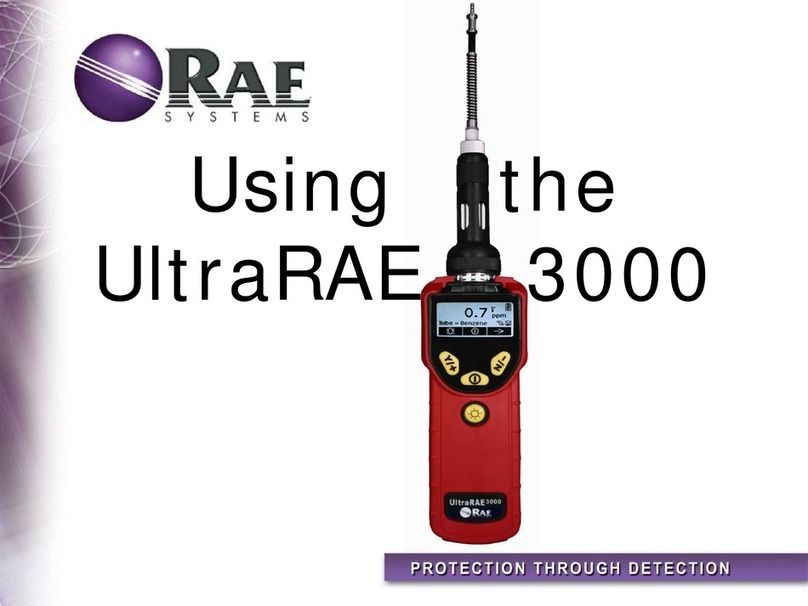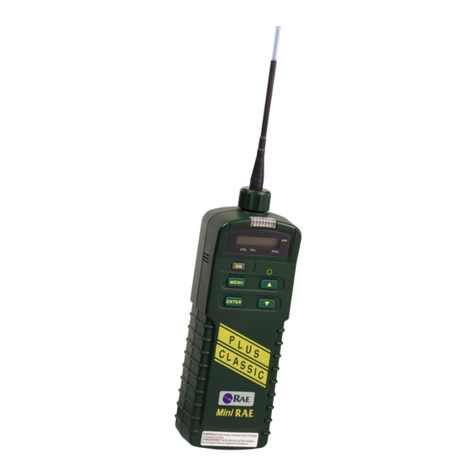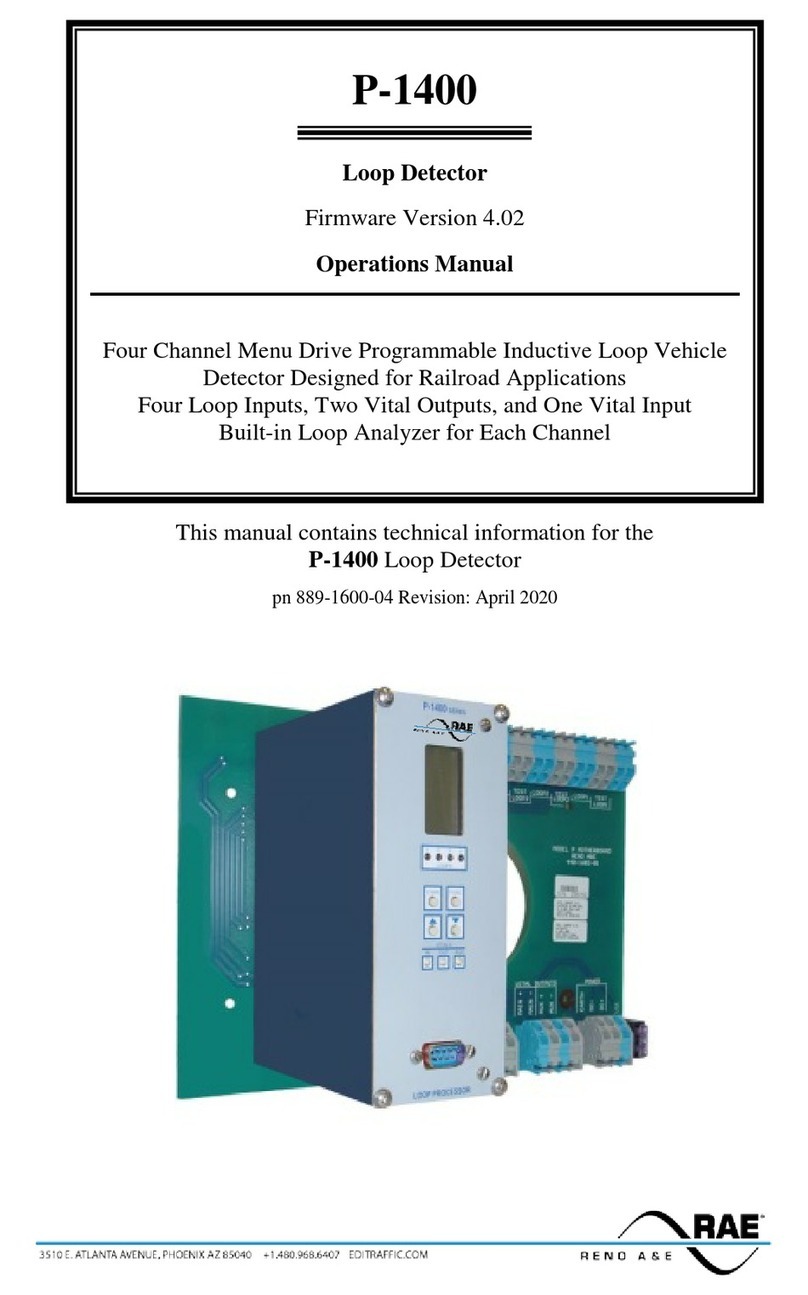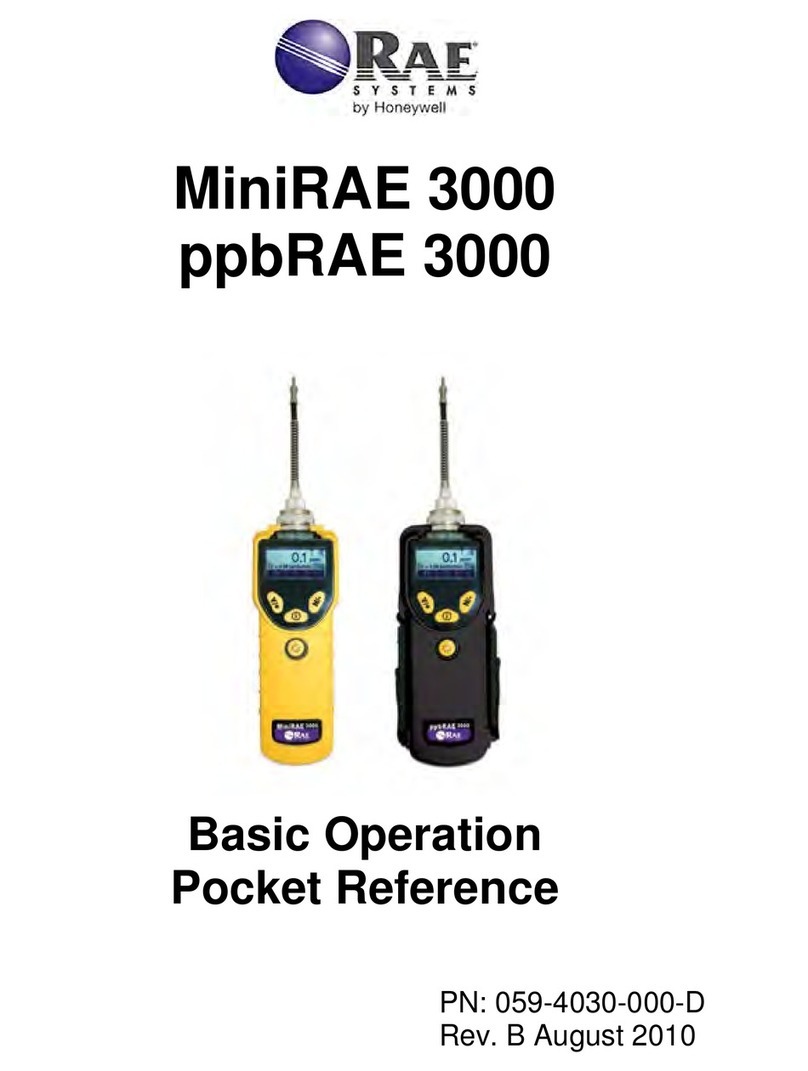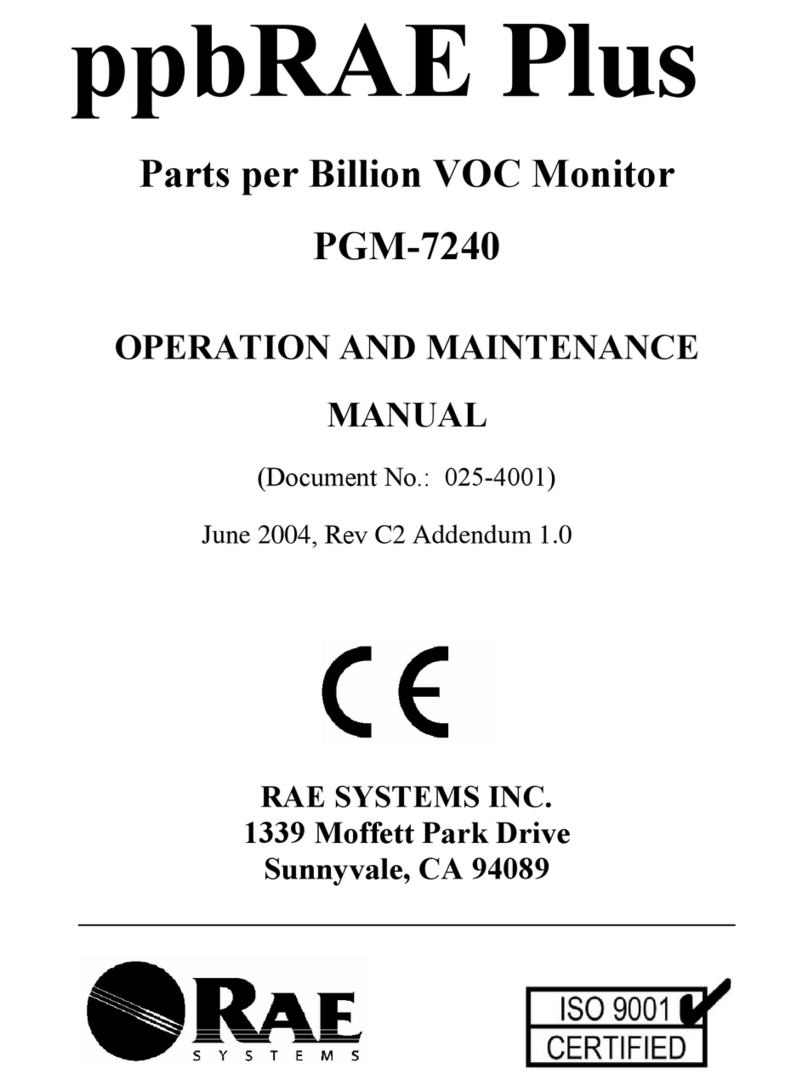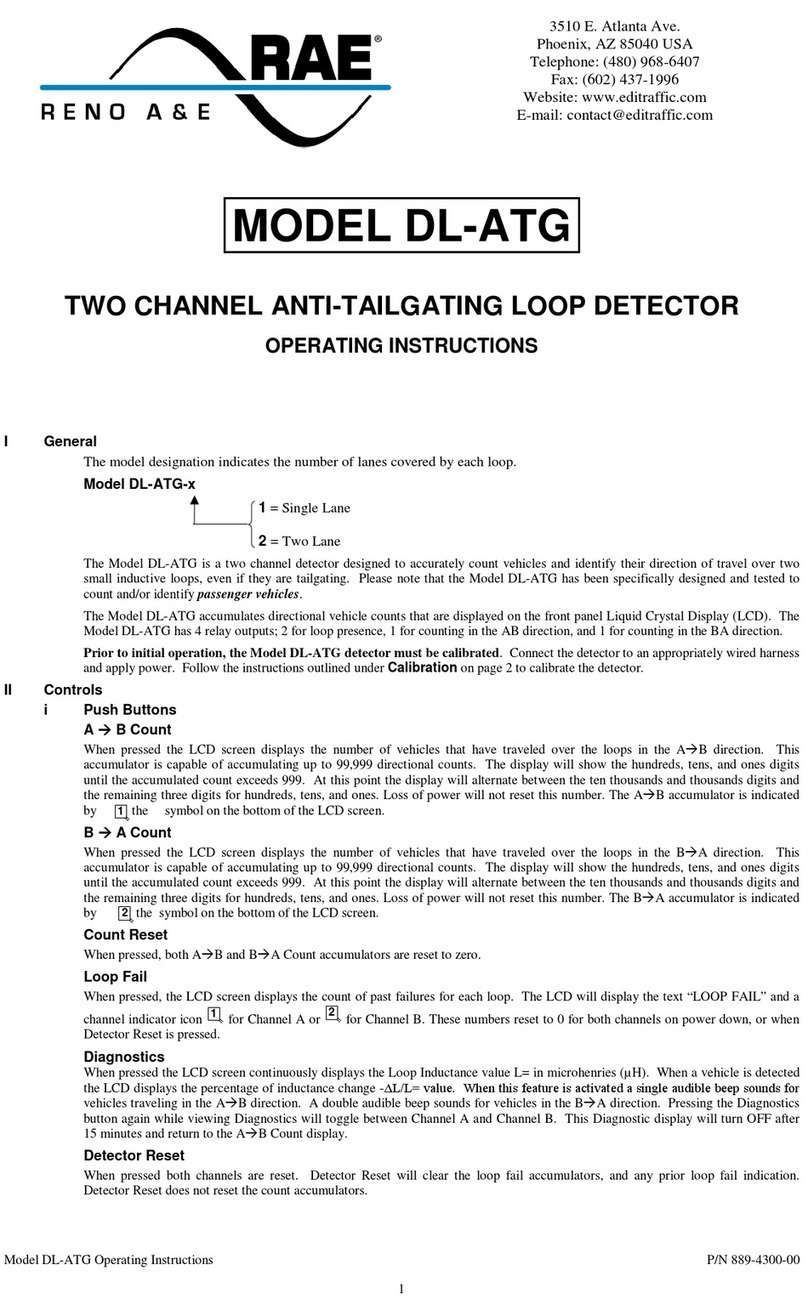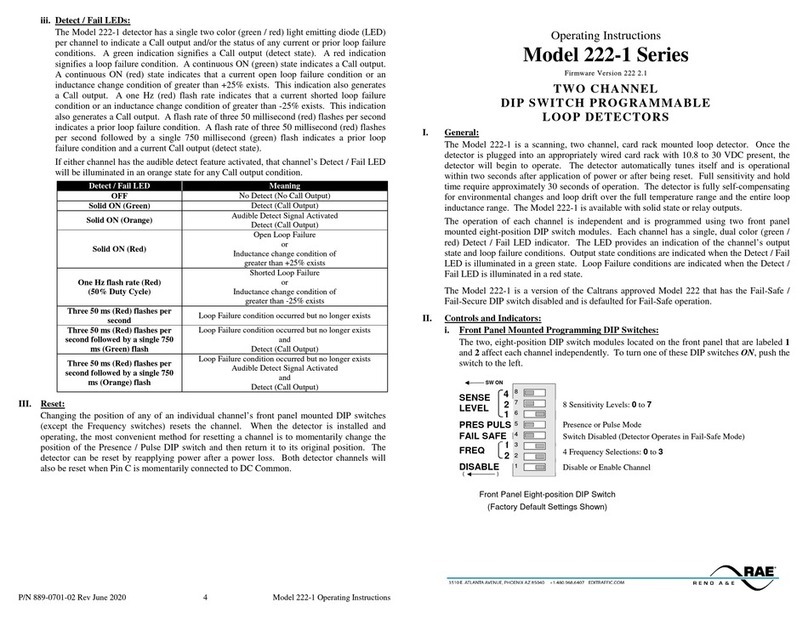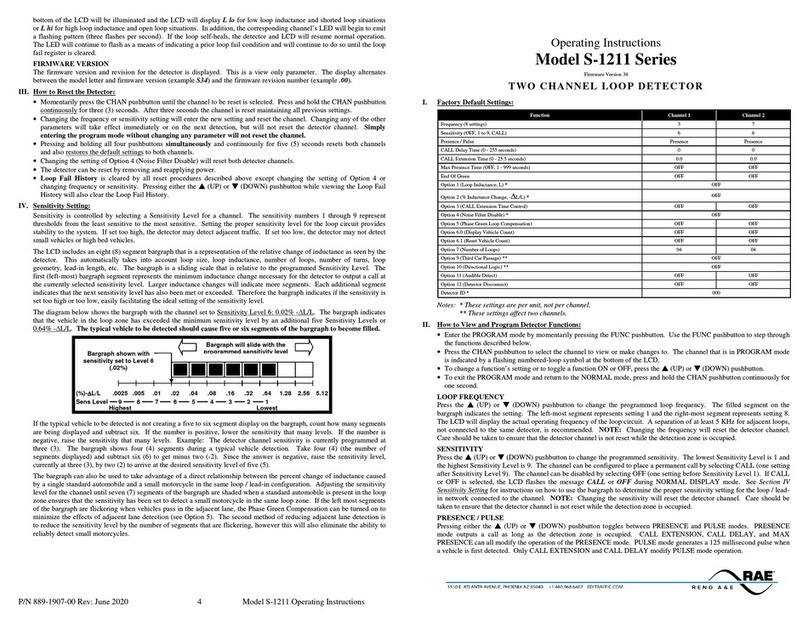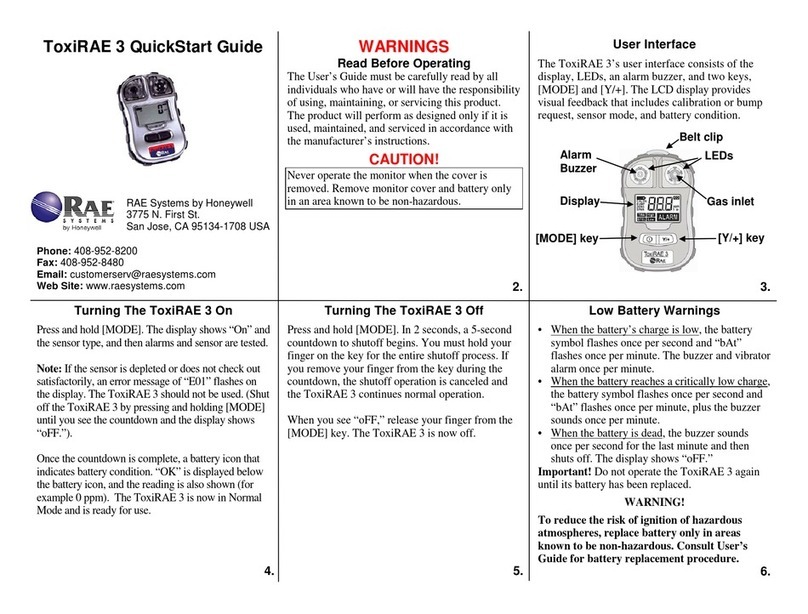
889-3809-00 Model 2018 Operations Manual Rev Apr 2020 Page 1of 41
Section 1 General Description
This product manual is for people installing, operating, and maintaining the Reno A & E Model 2018 Conflict
Monitor Unit (CMU). We designed the Reno A & E Model 2018 monitor to meet or exceed the specifications in
Chapter 3, Section 6, of the Caltrans Transportation Electrical Equipment Specifications (TEES) dated 08/16/02.
Section 6 responds to the need for a monitor to accomplish the detection of, and response to, improper and
conflicting signals and improper operating voltages in a Controller Assembly (CA). This standard provides
interchangeability between units of different manufacturers. We developed this eighteen-channel monitor to allow
users to take full advantage of all eighteen load switch positions in a Model 332 cabinet with three output files.
This monitor is backward compatible with sixteen-channel monitors.
The Model 2018 detects the presence of voltage on conflicting field connection terminals; it detects the absence of
proper voltages on all of the signal field connection terminals of a channel, and it monitors for the presence of
satisfactory operating voltages within the Controller Unit (CU) and the Model 2018 itself. If any of these
conditions exist or are out of tolerance for the minimum time defined in Chapter 3 Section 6 of the Caltrans
Transportation Electrical Equipment Specifications (TEES) dated 08/16/02, the Output relay’s normally open
contacts will transfer from the no fault state (relay energized) to the fault state (relay de-energized). The closure of
the Output relay contacts will cause the transfer of the traffic signals to Flashing Operation. The fault is recorded
by the Model 2018 and displayed on the appropriate LED indicators.
The Model 2018 monitor can operate in one of several basic configurations:
210 Monitor timings with 16 Channels using standard incandescent field display thresholds.
210 Monitor timings with 18 Channels using standard incandescent field display thresholds.
210 Monitor timings with 16 Channels using LED field display thresholds.
210 Monitor timings with 18 Channels using LED field display thresholds.
2010 Monitor timings with 16 Channels using standard incandescent field display thresholds.
2010 Monitor timings with 18 Channels using standard incandescent field display thresholds.
2010 Monitor timings with 16 Channels using LED field display thresholds.
2010 Monitor timings with 18 Channels using LED field display thresholds.
The differences between the 210 mode and the 2010 mode are:
AC Power -In the 210 mode, the AC Line voltage is considered valid at >98VRMS and invalid at
<92VRMS. In the 2010 mode, the AC Line voltage is considered valid at > 103VRMS and invalid at
<98VRMS. (Now a new Factory Option)
Watchdog Timer Fault - In the 210 mode, a fault occurs if this input does not change states within
1500 milliseconds of the last state change. In the 2010 mode, a fault occurs if this input does not
change states within 1000 milliseconds of the last state change.
Stop Timing - In the 210 mode, the Stop Timing output releases at the same time the Fault Relay
returns to the no fault state. In the 2010 mode, the Stop Timing output releases 250 milliseconds
before the Fault Relay returns to the no fault state.
Red Fail Timing - In the 210 mode, the Red Fail monitoring function will ignore faults of less than
700 milliseconds duration and trigger on faults of more than 1000 milliseconds duration. In the 2010
mode the Red Fail monitoring function will ignore faults of less than 1200 milliseconds duration and
activate on faults of more than 1500 milliseconds duration.
Red Enable - In the 210 mode, a state change of the Red Enable input is recognized when it is in a
state for at least 100 milliseconds. In the 2010 mode, a state change of the Red Enable input is
recognized when it is in a state for at least 400 milliseconds.
The differences between the 16-channel and 18-channel mode are:
The 16-channel mode of operation can only be selected by inserting a 16-channel diode card into the
monitor. In the 16-channel mode the monitor will only check the first 16 channels of the monitor for
faults. Channels 17 and 18 are checked to ensure that no green or yellow input is active while the
monitor is in the 16-channel mode. An active green or yellow on channel 17 or 18 will cause the
monitor to transfer to the fault state with the PC AJAR and CONFLICT indications lit. While the
monitor is operating normally in the 16-channel mode the red, yellow and green indications for
channel 17 and 18 will display the function inhibited indication.
The 18-channel mode of operation can only be selected by inserting an 18-channel diode card into the
monitor. In the 18-channel mode the monitor will perform the same fault tests for channels 17 and 18
as it would for the other 16 channels.
The differences between standard incandescent field display thresholds and the LED field display thresholds are:
With the incandescent thresholds, the monitor senses greens and yellows as ON when their voltage is
above 25VRMS and OFF when below 15VRMS. Reds are ON when their voltage is above 70VRMS and






